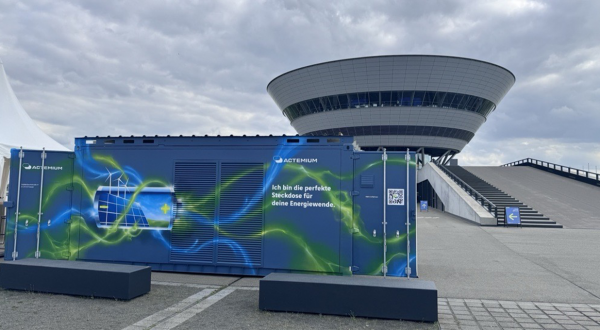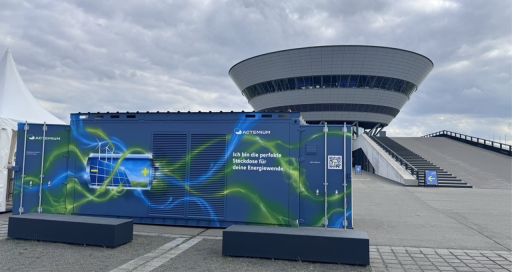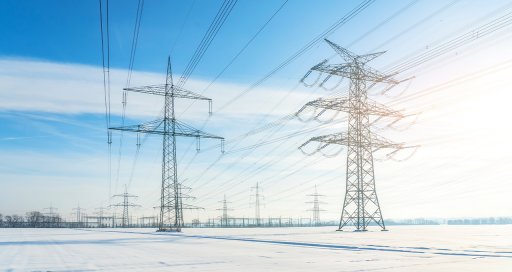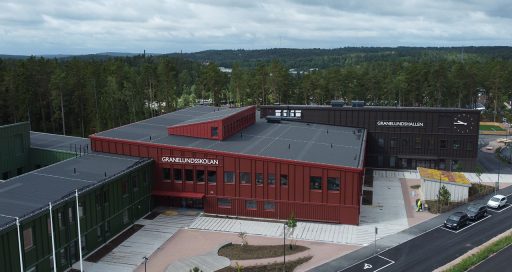Offshore wind farms are the focus of numerous experimental projects exploring the use of hydrogen to harness their electricity production potential. Northern European countries are well ahead of the curve in this new market.
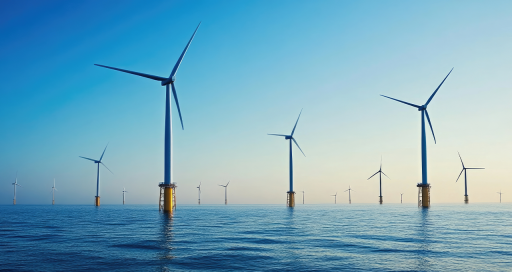
Offshore green hydrogen projects are appearing on the horizon, especially in Europe, which could see 300 TWh worth of hydrogen produced by 2050 using electricity generated by offshore wind farms in the North Sea, according to the Specification of a European Offshore Hydrogen Backbone study published by DNV, a quality and risk management services provider. This would account for a significant share of hydrogen production in Europe.
In 2023, installed offshore wind capacity amounted to 34 GW in Europe, 1.5 GW of which was in France, and 75 GW worldwide, with in-sector predictions of 234 GW installed by 2030 and 300 GW by 2050, according to the Global Wind Energy Council, an association representing the worldwide wind power industry.
What is behind this growth in projects combining hydrogen and offshore wind? Arnaud Lemant, Business Development Manager at Actemium Oil & Gas & Renewables, explains that “This is linked to the fact that certain countries, such as Denmark, will be producing a surplus of renewable electricity, and that others, such as Great Britain, will have increased availability of engineering resources due to reduced activity in their oil and gas fields. The main motivation behind these projects is to be able to produce and consume hydrogen-based electricity in the region, in favourable economic conditions compared with imports from outside Europe.”
However, numerous technical problems remain to be solved. The most widely used electrolysis technologies (anion exchange membrane) for hydrogen production require extremely pure water and are therefore not readily compatible with seawater. Additionally, hydrogen storage is already expensive, and storing it on the seabed is likely to generate extra costs.
Experimental projects
The many projects under development are being designed to test the best solutions against the specific constraints of the offshore environment. One of these, dubbed Deep Purple™, is a pilot project consortium to design, build and test a physical, ground-based pilot at TechnipFMC’s Norwegian headquarters in Kongsberg, southern Norway.
“The projects in progress rely heavily on prototypes. The fact that they are still experimental makes them rewarding to take part in.”
It involves the use of surplus offshore wind energy to produce hydrogen, with the unique feature that the gas is then piped to the seabed, where it is stored under pressure. During periods when wind energy cannot meet demand, the fuel cells will convert the stored hydrogen back into electricity for distribution to consumers. This system could provide a stable supply for off-grid locations such as offshore installations and remote islands.
Actemium Sarpsborg is responsible for all electrical engineering, instrumentation and cabling for the Deep Purple pilot, which is currently being developed onshore at the Technip FMC headquarters..
The French green hydrogen producer and supplier Lhyfe is coordinating another project: HOPE (Hydrogen Offshore Production for Europe), with the target for 2026 of developing, building and operating the first 10 MW offshore production unit in the North Sea, a kilometre out from the Port of Ostend, Belgium. Its aim is to demonstrate the technical and financial viability of this offshore project with a short pipeline supplying the hydrogen produced to onshore customers for use in the industrial and transport sectors. The main innovations seen in this demonstrator are the first 10 MW Proton Exchange Membrane (PEM) electrolyser to be installed at sea, with a seawater treatment system and flexible composite thermoplastic undersea pipeline.
Another iconic project is AquaDuctus, located in the North Sea, off the coast of Germany. This offshore hydrogen pipeline stretching more than 400 km could ultimately form part of Europe’s “hydrogen backbone”. From 2030, AquaDuctus will be connected to the SEN1 hydrogen wind farm, and eventually to other, more distant wind farms, to transport up to a million tonnes of hydrogen a year.
Falling costs
“Onshore hydrogen production is currently still the simplest solution,” says Arnaud Lemant, “and production at the wind farms themselves, for example to refuel hydrogen-powered ships, or at offshore stations closer to land, to produce large volumes with lower transport costs, remains subject to many unknown factors.”
Even in Actemium’s area of expertise, the electrical engineering component, “The chemical dimensions (water purity, etc.) and process-related aspects (materials in saline conditions, small compressors, etc.) have so far barely been tested at sea. We need a lot of prototypes. That’s why it’s so rewarding to work on these projects, even though they are still experimental.”
The question of cost remains. A recent research article entitled Techno-economic assessment of offshore wind-to-hydrogen scenarios: A UK case study shows that the price of green offshore hydrogen could become economically attractive by 2030.
“The most expensive part of hydrogen production is the electricity, which represents around one-third of the total cost,” explains Arnaud Lemant. “When the supply of electricity from renewable sources exceeds demand, its price falls and becomes more attractive to use for producing hydrogen. In this scenario, the study estimates that the cost of a kilo of green hydrogen will be €5 in 2025, compared with €10 today and just €2 for hydrogen produced using fossil fuels. By 2030, that price is expected to be between €3 and €4.”
The prospects are therefore relatively encouraging. Clearly, Northern Europe has decided to organise now to be able to produce hydrogen in the future, especially for industrial uses.
07/15/2025

